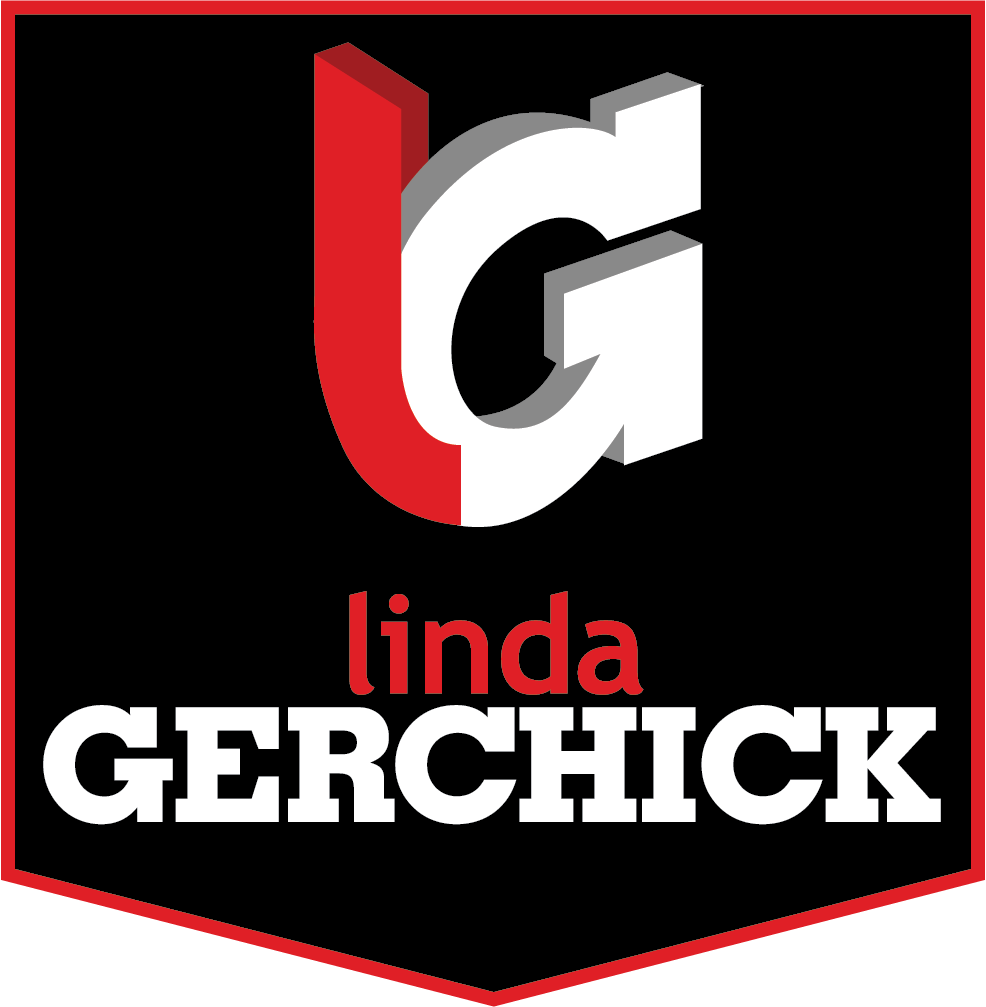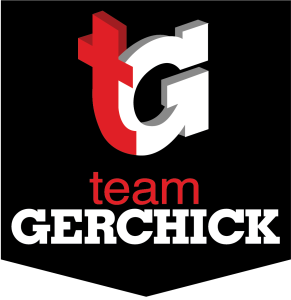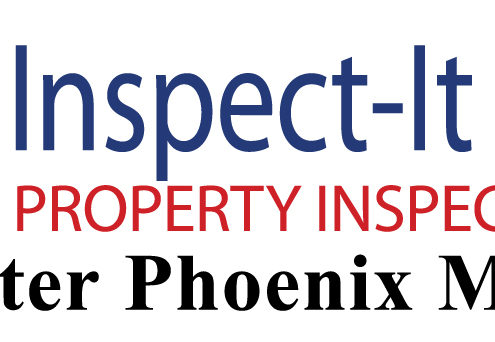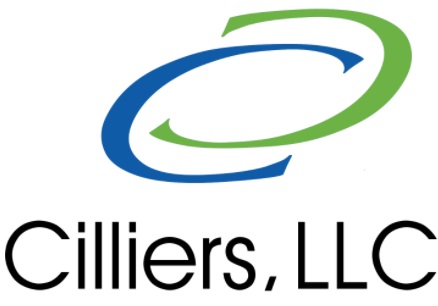As I’m sure you’re aware, the Tax Cuts and Jobs Act of 2017 (TCJA) was enacted at the end of last year. It’s the largest tax overhaul since the 1986 Tax Reform Act and will affect almost every business in the United States. Considering all the changes that took effect this year, It may be appropriate for us to meet as early as possible to discuss how these changes might affect your 2018 business tax return and to nail down any actions that may need to be taken before the end of the year.
Here’s a quick recap of the new rules, followed by some thoughts on steps we can take to reduce your 2018 tax liability.
- New Business-Related Tax Rules for 2018
The business-related provisions in the TCJA are permanent and generally take effect beginning with 2018 tax years. For businesses, highlights of the new law include: (1) an increase in amounts that may be expensed under Section 179 and an increase in the bonus depreciation deduction; (2) a 21 percent flat corporate tax rate; (3) a new business deduction for sole proprietorships and pass-through entities; (4) the elimination of the corporate alternative minimum tax (AMT); (5) modifications of rules relating to accounting methods; and (6) several changes involving partnerships and S corporations. The following is a brief overview of some of the more significant aspects of the new tax law that may affect your business.
Section 179 Deduction. For 2018, businesses can write off up to $1,000,000 of qualifying property under Section 179. The theory is that the money a business saves on taxes, as a result of deducting the full amount of equipment and other business property, can be reinvested back into the business. Additionally, writing off an asset in the year it is purchased, saves you the time and money it takes to keep track of the remaining basis of an asset after its yearly depreciation. The $1,000,000 amount is reduced (but not below zero)
by the amount by which the cost of the qualifying property placed in service during the tax year exceeds $2,500,000.
In addition, the definition of property that qualifies for the Section 179 deduction has been expanded to include certain depreciable tangible personal property used predominantly to furnish lodging or in connection with furnishing lodging, as well as any of the following improvements to nonresidential real property: roofs; heating, ventilation, and air-conditioning property; fire protection and alarm systems; and security systems.
Bonus Depreciation Deduction. The new tax law extended and modified the additional first-year (i.e., “bonus”) depreciation deduction, which had generally been scheduled to end in 2019. An enhanced bonus depreciation deduction is now available, generally, through 2026. Under the new rules, the 50-percent additional depreciation allowance that was previously allowed is increased to 100 percent for property placed in service after September 27, 2017, and before January 1, 2023, as well as for specified plants planted or grafted after September 27, 2017, and before January 1, 2023. These deadlines are extended for certain longer production period property and certain aircraft.
The 100-percent allowance is phased down by 20 percent per calendar year in tax years beginning after 2022 (after 2023 for longer production period property and certain aircraft).
Another new provision removes the requirement that, in order to qualify for bonus depreciation, the original use of qualified property must begin with the taxpayer. Thus, the bonus depreciation deduction applies to purchases of used as well as new items.
Additional Depreciation on ‘Luxury’ Automobiles and Certain Personal Use Property. Another benefit of the new tax law is that it increases the depreciation limitations that apply to certain “listed” property such as vehicles with a gross unloaded weight of 6,000 lbs or less (known as “luxury” automobiles). For luxury automobiles placed in service after 2017, an additional $8,000 deduction is available, thus making the write-off for the first year $18,000. The deduction is $16,000 for the second year, $9,600 for the third year, and $5,760 for the fourth and later years in the recovery period.
New Deduction for Qualified Business Income. One of the biggest changes for 2018 is the new qualified business income deduction. If you are a sole proprietor, a partner in a partnership, a member in an LLC taxed as a partnership, or a shareholder in an S corporation, you may be entitled to a deduction for qualified business income for tax years beginning after December 31, 2017, and before January 1, 2026. Trusts and estates are also eligible for this deduction.
While there are important restrictions to taking this deduction, the amount of the deduction is generally 20 percent of qualifying business income from a qualified trade or business. A qualified trade or business means any trade or business other than (1) a specified service trade or business, or (2) the trade or business of being an employee. A “specified service trade or business” is defined as any trade or business involving the performance of services in the fields of health, law, accounting, actuarial science, performing arts, consulting, athletics, financial services, brokerage services, including investing and investment management, trading, or dealing in securities, partnership interests, or commodities, and any trade or business where the principal asset of such trade or business is the reputation or skill of one or more of its employees. Engineering and architecture services are specifically excluded from the definition of a specified service trade or business.
However, there is a special rule which allows you to take this deduction even if you have a specified service trade or business. Under that rule, the provision disqualifying such businesses from being considered a qualified trade or business for purposes of the qualified business income deduction does not apply to individuals with taxable income of less than $157,500 ($315,000 for joint filers). After an individual reaches the threshold amount, the restriction is phased in over a range of $50,000 in taxable income ($100,000 for joint filers). Thus, if your income falls within the range, you are allowed a partial deduction. Once the end of the range is reached, the deduction is completely disallowed.
For purposes of the deduction, items are treated as qualified items of income, gain, deduction, and loss only to the extent they are effectively connected with the conduct of a trade or business within the United States. In calculating the deduction, qualified business income means the net amount of qualified items of income, gain, deduction, and loss with respect to the qualified trade or business of the taxpayer.
Qualified business income does not include any amount paid by an S corporation that is treated as reasonable compensation of the taxpayer, or any guaranteed payment (or other payment) to a partner in a partnership for services rendered with respect to the trade or business. Qualified items do not include specified investment-related income, deductions, or losses, such as capital gains and losses, dividends and dividend equivalents, interest income other than that which is properly allocable to a trade or business, and similar items.
If the net amount of qualified business income from all qualified trades or businesses during the tax year is a loss, it is carried forward as a loss from a qualified trade or business to the next tax year (and reduces the qualified business income for that year).
W-2 Wage Limitation. The deductible amount for each qualified trade or business is the lesser of: (1) 20 percent of the taxpayer’s qualified business income with respect to the trade or business; or (2) the greater of: (a) 50 percent of the W-2 wages with respect to the trade or business, or (b) the sum of 25 percent of the W-2 wages with respect to the trade or business and 2.5 percent of the unadjusted basis, immediately after acquisition, of all qualified property (generally all depreciable property still within its depreciable period at the end of the tax year).
The W-2 wage limitation does not apply to individuals with taxable income of less than $157,500 ($315,000 for joint filers). After an individual reaches the threshold amount, the W-2 limitation is phased in over a range of $50,000 in taxable income ($100,000 for joint filers).
In the case of a partnership or S corporation, the business income deduction applies at the partner or shareholder level. Each partner in a partnership takes into account the partner’s allocable share of each qualified item of income, gain, deduction, and loss, and is treated as having W-2 wages for the tax year equal to the partner’s allocable share of W-2 wages of the partnership. Similarly, each shareholder in an S corporation takes into account the shareholder’s pro rata share of each qualified item and W-2 wages.
The deduction for qualified business income is subject to some overriding limitations relating to taxable income, net capital gains, and other items which are beyond the scope of this letter and will not affect the amount of the deduction in most situations.
Changes in Accounting Method Rules. The new tax law has also expanded the number of businesses eligible to use the cash method of accounting as long as the business satisfies a gross receipts test. This test allows businesses with annual average gross receipts that do not exceed $25 million for the three prior tax-year period to use the cash method. A similar gross receipts threshold provides an exemption from the following accounting requirements/methods: (1) uniform capitalization rules; (2) the requirement to keep inventories; and (3) the requirement to use the percentage-of-completion method for certain long-term contracts (thus allowing the use of the more favorable completed-contract method, or any other permissible exempt contract method).
We need to discuss whether or not your business might benefit from these changes. If the answer is yes, we’ll need to file tax forms with the IRS to initiate the changes, as well as set up your books and records to appropriately reflect the new methods being used. The sooner we do this, the better.
Carryover of Business Losses Is Now Limited. Beginning in 2018, excess business losses of a taxpayer other than a corporation are not allowed for the tax year. Under this excess business loss limitation, your loss from a non- passive trade or business is limited to $500,000 (married filing jointly) or $250,000 (all other taxpayers). Thus, such losses cannot be used to offset other income. Instead, if your business incurs such excess losses, you must carry them forward and treat them as part of your net operating loss carry forward in subsequent tax years. In fact, net operating losses carried over from a prior year can only offset current business income up to 80%.
New Interest Deduction Limitations. You may have heard about a new limitation on the deduction of interest expense. Effective for 2018, the deduction for business interest is limited to the sum of business interest income plus 30 percent of adjusted taxable income for the tax year. However, there is an exception to this limitation for certain small taxpayers, certain real estate businesses that make an election to be exempt from this rule, businesses with floor plan financing (i.e., a specialized type of financing used by car dealerships), and for certain regulated utilities.
The new law exempts from the interest expense limitation taxpayers with average annual gross receipts for the three-taxable year period ending with the prior taxable year that do not exceed $25 million. Further, at the taxpayer’s election, any real property development, redevelopment, construction, reconstruction, acquisition, conversion, rental, operation, management, leasing, or brokerage trade or business is not treated as a trade or business for purposes of the limitation, and therefore the limitation does not apply to such trades or businesses.
Elimination of Entertainment Deduction. The new tax law also eliminated business deductions for entertainment. As a result, no deduction is allowed with respect to: (1) an activity generally considered to be entertainment, amusement or recreation; (2) membership dues with respect to any club organized for business, pleasure, recreation or other social purposes; or (3) a facility or portion thereof used in connection with any of the above items.
Under prior law, there was an exception to this rule for entertainment, amusement, or recreation directly related to (or, in certain cases, associated with) the active conduct of a trade or business. This is no longer the case.
In addition, no deduction is allowed for expenses associated with providing any qualified transportation fringe benefits to your employees, except as necessary for ensuring the safety of an employee, including any expense incurred for providing transportation (or any payment or reimbursement) for commuting between the employee’s residence and place of employment.
A business may still generally deduct 50 percent of the food and beverage expenses associated with operating their trade or business (e.g., meals consumed by employees during work travel). If meals are combined with entertainment, the meal portion needs to be separately stated in order for the business to deduct the meal expense.
Changes to Partnership Rules. Several changes were made to the partnership tax rules. First, gain or loss from the sale or exchange of a partnership interest is treated as effectively connected with a U.S. trade or business to the extent that the transferor would have had effectively connected gain or loss had the partnership sold all of its assets at fair market value as of the date of the sale or exchange. Any gain or loss from the hypothetical asset sale by the partnership is allocated to interests in the partnership in the same manner as nonseparately stated income and loss.
Second, the transferee of a partnership interest must withhold 10 percent of the amount realized on the sale or exchange of the partnership interest unless the transferor certifies that the transferor is not a nonresident alien individual or foreign corporation.
Third, the definition of a substantial built-in loss has been modified so that a substantial built-in loss is considered to exist if the transferee of a partnership interest would be allocated a net loss in excess of $250,000 upon a hypothetical disposition by the partnership of all of the partnership’s assets in a fully taxable transaction for cash equal to the assets’ fair market value, immediately after the transfer of the partnership interest. This could necessitate the adjustment of the basis of partnership property.
Fourth, TCJA modifies the basis limitation on partner losses to provide that a partner’s distributive share of items that are not deductible in computing the partnership’s taxable income, and not properly chargeable to capital account, are allowed only to the extent of the partner’s adjusted basis in the partner’s partnership interest at the end of the partnership tax year in which an expenditure occurs. Thus, the basis limitation on partner losses applies to a partner’s distributive share of charitable contributions and foreign taxes.
Lastly, the rule providing for technical terminations of partnerships has been repealed.
Changes to S Corporation Rules. Several changes were also made to the tax rules involving S corporations. First, income that must be taken into account when an S corporation revokes its S corporation election is taken into account ratably over six years, rather than the four years under prior law. Second, a nonresident alien individual can be a potential current beneficiary of an electing small business trust (ESBT). Third, the charitable contribution deduction of an ESBT is not determined by the rules generally applicable to trusts but rather by the rules applicable to individuals. Thus, the percentage limitations and carryforward provisions applicable to individuals apply to charitable contributions made by the portion of an ESBT holding S corporation stock.
International Tax Changes. TCJA makes sweeping changes to the United States’ international tax regime through a series of highly complex provisions that are beyond the scope of this letter.
- II. Year-End Tax Plannin Section 179 Expensing and Bonus Depreciation. As discussed above, the Section 179 expensing and bonus depreciation rules have been generously enhanced under TCJA. These changes may create new opportunities to reduce current year tax liabilities through the acquisition of qualifying property – including property placed in service between now and the end of the year.
Vehicle-Related Deductions and Substantiation of Deductions. Expenses relating to business vehicles can add up to major deductions. If your business could use a large passenger vehicle, consider purchasing a sport utility vehicle weighing more than 6,000 pounds. Vehicles under that weight limit are considered listed property and deductions are more limited. However, if the vehicle is more than 6,000 pounds, up to $25,000 of the cost of the vehicle can be immediately expensed.
Vehicle expense deductions are generally calculated using one of two methods: the standard mileage rate method or the actual expense method. If the standard mileage rate is used, parking fees and tolls incurred for business purposes can be added to the total amount calculated.
Since the IRS tends to focus on vehicle expenses in an audit and disallow them if they are not property substantiated, you should ensure that the following are part of your business’s tax records with respect to each vehicle used in the business: (1) the amount of each separate expense with respect to the vehicle (e.g., the cost of purchase or lease, the cost of repairs and maintenance); (2) the amount of mileage for each business or investment use and the total miles for the tax period; (3) the date of the expenditure; and (4) the business purpose for the expenditure. The following are considered adequate for substantiating such expenses: (1) records such as a notebook, diary, log, statement of expense, or trip sheets; and (2) documentary evidence such as receipts, canceled checks, bills, or similar evidence. Records are considered adequate to substantiate the element of a vehicle expense only if they are prepared or maintained in such a manner that each recording of an element of the expense is made at or near the time the expense is incurred.
Retirement Plans and Other Fringe Benefits. Benefits are very attractive to employees. If you haven’t done so already, you may want to consider using benefits rather than higher wages to attract employees. While your business is not required to have a retirement plan, there are many advantages to having one. By starting a retirement savings plan, you not only help your employees save for the future, you can also use such a plan to attract and retain qualified employees. Retaining employees longer can impact your bottom line as well by reducing training costs. In addition, as a business owner, you can take advantage of the plan yourself, and so can your spouse. If your spouse is not currently on the payroll, you may want to consider adding him or her and paying a salary up to the maximum amount that can be deferred into a retirement plan. So, for example, if your spouse is 50 years old or over and receives a salary of $24,500, all of it could go into a 401(k), leaving your spouse with a retirement account but no taxable income.
By offering a retirement plan, you also generate tax savings to your business because employer contributions are deductible and the assets in the retirement plan grow tax free. Additionally, a tax credit is available to certain small employers for the costs of starting a retirement plan. Please let me know if this is an option you would like to discuss further.
Increasing Basis in Pass-thru Entities. If you are a partner in a partnership or a shareholder in an S corporation, and the entity is passing through a loss for the year, you must have enough basis in the entity in order to deduct the loss on your personal tax return. If you don’t, and if you can afford to, you should consider increasing your basis in the entity in order to take the loss in 2018.
De Minimis Safe Harbor Election. It may be advantageous to elect the annual de minimis safe harbor election for amounts paid to acquire or produce tangible property. By making this election, and as long as the items purchased don’t have to be capitalized under the uniform capitalization rules and are expensed for financial accounting purposes or in your books and records, you can deduct up to $2,500 per invoice or item (or up to $5,000 if you have an applicable financial statement).
S Corporation Shareholder Salaries. For any business operating as an S corporation, it’s important to ensure that shareholders involved in running the business are paid an amount that is commensurate with their workload. The IRS scrutinizes S corporations which distribute profits instead of paying compensation subject to employment taxes. Failing to pay arm’s length salaries can lead not only to tax deficiencies, but penalties and interest on those deficiencies as well. The key to establishing reasonable compensation is being able to show that the compensation paid for the type of work an owner-employee does for the S corporation is similar to what other corporations would pay for similar work. If you are in this situation, we need to document the factors that support the salary you are being paid.
As you can see, a lot is going on with respect to business income and taxes for 2018. The new tax law provisions are quite extensive and also quite complicated.
Please call me at your earliest convenience so we can discuss how these changes will impact your business, and what kind of strategies we can adopt to ensure that your business gets the best possible tax outcome under the new rules.
Sincerely,
Anne Cornelius, CPA

 Today I often hear that people don’t want to call or stop in to see someone, because they feel they are being intrusive. A “pre-email” or text is thought of as polite; maybe. But if what you want to learn holds value for all parties, I find a call or in-person meeting is welcome. Problem is people on the calling side are many times acting in a self-serving way. Bad, very bad. I talk to a lot of people about communication and connections. I’ve learned so much. It takes a lot of practice. It isn’t always easy for sure. I’m convinced we can do better. We can be “connected” AND benefit from the amazing tools we have to share and connect. Remember the ice bucket challenge? How about we come up with a challenge for people to listen more than they speak? I have no idea what that might look like as a “game” or “challenge,” and I’m hoping all you smart folks might. I ask you. Am I off base? Is communication just fine? I’m anxious to listen. You can even call me if you like.
Today I often hear that people don’t want to call or stop in to see someone, because they feel they are being intrusive. A “pre-email” or text is thought of as polite; maybe. But if what you want to learn holds value for all parties, I find a call or in-person meeting is welcome. Problem is people on the calling side are many times acting in a self-serving way. Bad, very bad. I talk to a lot of people about communication and connections. I’ve learned so much. It takes a lot of practice. It isn’t always easy for sure. I’m convinced we can do better. We can be “connected” AND benefit from the amazing tools we have to share and connect. Remember the ice bucket challenge? How about we come up with a challenge for people to listen more than they speak? I have no idea what that might look like as a “game” or “challenge,” and I’m hoping all you smart folks might. I ask you. Am I off base? Is communication just fine? I’m anxious to listen. You can even call me if you like. 










